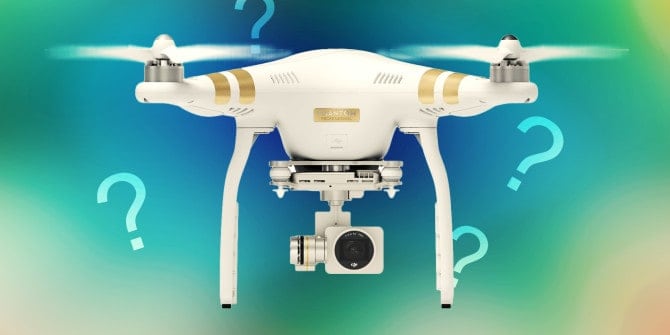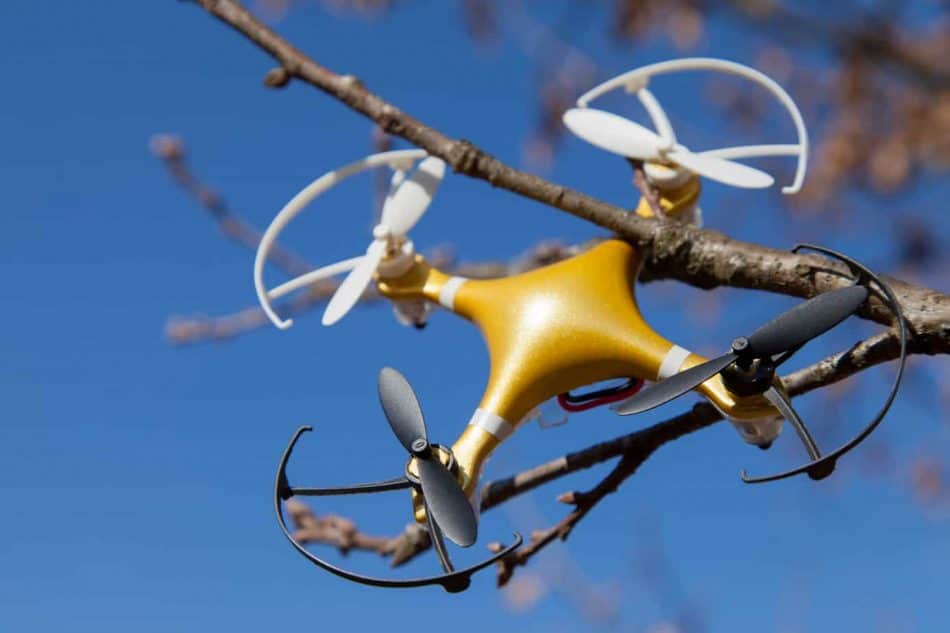With advancements in drone technology, there are now drones with up to eight propellers known as quadcopters. However, with the number of propellers and drones seemingly increasing on these aerial vehicles, most people are curious about how many propellers a drone really needs to fly. So can a drone fly with just one propeller?
A drone flying with only one propeller is prone to spinning and will easily lose balance, which presents significant safety concerns. It is also challenging to control or maneuver a drone with a single propeller. Consequently, drones require a minimum of two propellers to take flight safely.
This article will discuss questions related to this topic in detail. You will discover the minimum number of propellers needed for a drone to fly and why this minimum number is essential. You will also find out whether or not you should take your drone out for a spin if it only has one propeller.

Can a Drone Take Off on One Propeller?
A drone cannot take off on one propeller. It requires a minimum of two propellers to fly safely and stay in the air. While there are some rare exceptions, you would be ill-advised to take your drone for a spin on only one propeller.
A 2016 article by the BBC caught the attention of drone enthusiasts. It stated that the Institute for Dynamic Systems and Control at ETH Zurich had designed a drone that could fly with only one propeller. According to this source, the drone – referred to as a monospinner – would be able to take flight with the single propeller without compromising safety, balance, or maneuverability.
However, it is crucial to appreciate that this monospinner is not the rule but rather an exception to the rule. As explained by the drone gurus at DroneRush, a drone needs at least two propellers to take to the skies safely.
Why Does a Drone Need at Least Two Propellers?
A drone requires at least two propellers because for flight to take place, one spinning propeller creates an equal amount of force in the opposite direction. Therefore, if the first propeller spins in a clockwise direction, the other propeller needs to spin in an anticlockwise direction.
Besides creating a sufficient amount of thrust to allow the drone to take flight, having a minimum of two propellers is also essential for the following reasons:
It Enhances Balance
With one propeller spinning in a clockwise direction and the other moving anticlockwise, the drone will stay balanced. It is important to note that even with four propellers, the same basic science of clockwise and anticlockwise force generation still applies.
Accordingly, if the drone only has one propeller or three propellers, the amount of force created in one direction will not be offset in the opposite direction. This will cause your drone to spin. Having a minimum of two propellers is therefore crucial in ensuring that your drone is balanced and does not spin out of control.
It Increases Safety
Flying a drone with only one propeller also poses a safety risk. This is because these propellers typically have blade-like projections which spin at very high speeds.
Considering the lack of balance associated with flying a drone with just one propeller, there’s a high risk of injury if your drone starts spinning out of control. This can result in deep cuts and other injuries to vulnerable parts of your body, such as your mouth, hands, and even eyes.
I do not, therefore, recommend trying to fly your drone on only one propeller.
Control and Maneuverability
The propellers on a drone are not simply vital for creating enough thrust to take the craft in flight, they are also designed to promote maneuverability and control. Due to the force imbalance associated with having one propeller, it is very difficult to control or maneuver a drone with a single propeller while in flight.
There’s a high likelihood that even if you can somehow get the drone mid-air safely, you will not be able to effectively maneuver or control your craft mid-air. This increases the likelihood of crashing into obstacles or other people. The risk is truly not worth it.

Exceptions to the Rule
While flying a drone with only one propeller – or three out of 4 propellers – greatly impairs the above vital aspects of flight, there are some special exceptions.
Theoretically, (as is the case with the monospinner) a drone can fly with only one or three propellers, as long as there are special algorithms installed in the craft’s recovery software. These algorithms can help counter the imbalance created by unequal force creation on opposite sides from the start.
However, this only applies to very few drones. Majority of commercial drones do not have these algorithms in place. Therefore, it is extremely difficult and risky to try and fly commercial drones that sport only one propeller.
Can You Fly a Drone With a Damaged Propeller?
It is possible to fly a drone if one of the propellers is damaged. However, this will depend on the kind of damage and the extent of damage to the propeller.
Say you have a drone with two propellers, but one of the propellers is broken or damaged. Can you still fly it? The extent to which you can or can’t fly a drone with a broken propeller will largely depend on the extent of the damage incurred.
It is, however, important to note that you cannot, nor should you, try to fly a drone if the propeller is completely broken or severely damaged. The aerial vehicle will not be able to take off safely, and there is a high likelihood of spinning.
Nonetheless, if the damage to the propeller is minor, such as a broken propeller tip, you can still fly your drone and bring it down safely. The number of propellers also play a role in such scenarios.
Oftentimes, drones with a large number of propellers such as hexacopters will be more stable – even with a broken propeller -, when compared to quadcopters and drones with two propellers. This notwithstanding, the quality and smoothness of the flight will still be sub par if one of the propellers is broken.

Conclusion
In closing, it is evident that a drone would not be able to take off with just one propeller. A solitary propeller cannot create the right amount of thrust necessary to get the drone off the ground.
Besides, even if the drone is able to lift off from the ground, there is a high risk of spinning or tipping over, which ushers in significant safety concerns. Additionally, such a craft would be extremely difficult to control, balance or maneuver.
